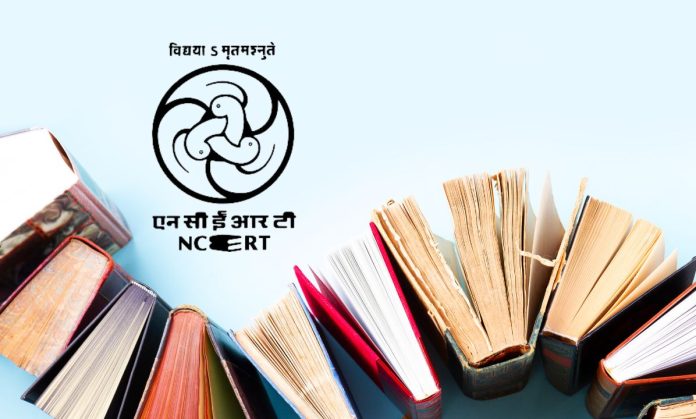Last week, the newly revised NCERT Class 12 Political Science textbook was released, featuring notable changes. Among them, the term “Babri Masjid” has been replaced with “three-domed structure.” The Ayodhya section has also been condensed from four pages to two, with many previous details omitted.
The earlier NCERT textbook described Babri Masjid as a 16th-century mosque built by Mughal emperor Babur’s General Mir Baqi. In contrast, the revised chapter refers to it as “a three-dome structure built at the site of Shri Ram’s birthplace in 1528, featuring visible displays of Hindu symbols and relics both inside and outside.”
Previously, two pages detailed the events following the Faizabad (now Ayodhya) district court’s 1986 decision to unlock the mosque. It covered the mobilization on both sides, communal tensions, the Rath Yatra from Somnath to Ayodhya, and the Kar Seva by volunteers in December 1992 aimed at constructing the Ram Temple. The account also included the mosque’s demolition and the subsequent communal violence in January 1993, noting the BJP’s “regret over the happenings at Ayodhya” and the ensuing “serious debate over secularism.”
The revised NCERT text now reads: “In 1986, the situation regarding the three-dome structure took a significant turn when the Faizabad (now Ayodhya) district court ruled to unlock it, allowing worship there. The dispute had persisted for decades, with claims that the three-dome structure was built at Shri Ram’s birthplace after demolishing a temple. Although Shilaanyas for the temple was done, further construction was prohibited.”
It continues: “The Hindu community felt their concerns about Shri Ram’s birthplace were ignored, while the Muslim community sought assurance of their possession of the structure. Tensions rose between both communities over ownership, leading to numerous disputes and legal battles. Both communities sought a fair resolution. In 1992, after the structure’s demolition, some critics argued it posed a significant challenge to Indian democratic principles.”
A new subsection titled “From Legal Proceedings to Amicable Acceptance” details the Supreme Court’s decision on the Ayodhya dispute. It highlights that “conflicts are inevitable in any society” but stresses that “in a multi-religious and multicultural democratic society, these conflicts are usually resolved through due process of law.” The text then discusses the unanimous 5-0 Supreme Court verdict on November 9, 2019, which paved the way for the temple inaugurated earlier this year.
The textbook explains: “The verdict allotted the disputed site to the Shri Ram Janmabhoomi Teertha Kshetra Trust for constructing the Ram temple and directed the government to allocate an appropriate site for a mosque to the Sunni Central Waqf Board. This resolution demonstrates how democracy can address conflicts in a plural society, upholding the inclusive spirit of the Constitution. The issue was resolved through due process based on evidence such as archaeological excavations and historical records. The Supreme Court’s decision was widely celebrated, exemplifying consensus-building on a sensitive issue, reflecting the maturity of India’s democratic ethos.”
Removed from the new textbook are newspaper clippings, such as one from December 7, 1992, with the headline “Babri Masjid demolished, Centre sacks Kalyan Govt,” and another from December 13, 1992, quoting former Prime Minister Atal Bihari Vajpayee saying, “Ayodhya BJP’s worst miscalculation.” The previous version also included an excerpt from a judgment by Chief Justice Venkatachaliah and Justice GN Ray in the case Mohd. Aslam v. Union of India, October 24, 1994, which convicted Kalyan Singh (UP Chief Minister at the time of the demolition) of contempt of court for failing to “uphold the majesty of law.” The judgment stated, “since the contempt raises larger issues affecting the very foundation of the secular fabric of our nation, we also sentence him to token imprisonment of one day.”
Additional Updates
Removal of ‘Azad Kashmir’ and Addition of ‘Chinese Aggression’ The Class 12 NCERT Political Science textbook has updated its reference to India’s border situation with China. In Chapter 2 of the book Contemporary World Politics, the previous sentence on page 25, “However, military conflict over a border dispute between the two countries marred that hope,” has been revised to, “However, Chinese aggression on the Indian border has marred that hope.”
Azad Pakistan Changed to POJK The textbook Politics in India Since Independence for Class 12 has also been updated. The term “Azad Pakistan” has been replaced with “Pakistan-occupied Jammu and Kashmir” (POJK). On page 119, the former text stated, “India claims that this area is under illegal occupation. Pakistan describes this area as Azad Pakistan.” The revised text now reads, “However, it is the Indian territory which is under illegal occupation of Pakistan called Pakistan occupied Jammu and Kashmir (POJK).”
Abrogation of Article 370 The abrogation of Article 370 is addressed in the new textbooks on page 132. The earlier version stated, “While most of the states have equal powers, there are special provisions for some states like J&K and the states in the North-East.” This has been updated to: “While most of the states have equal powers, there are special provisions for some states like J&K and the states in the North-East. However, Article 370, which contains special provisions for J&K, was abrogated in August 2019.”
NCERT explains that the special provision, Article 370 of J&K, was revoked in August 2019 by the President of India, and a link to the updated information has been provided.





























